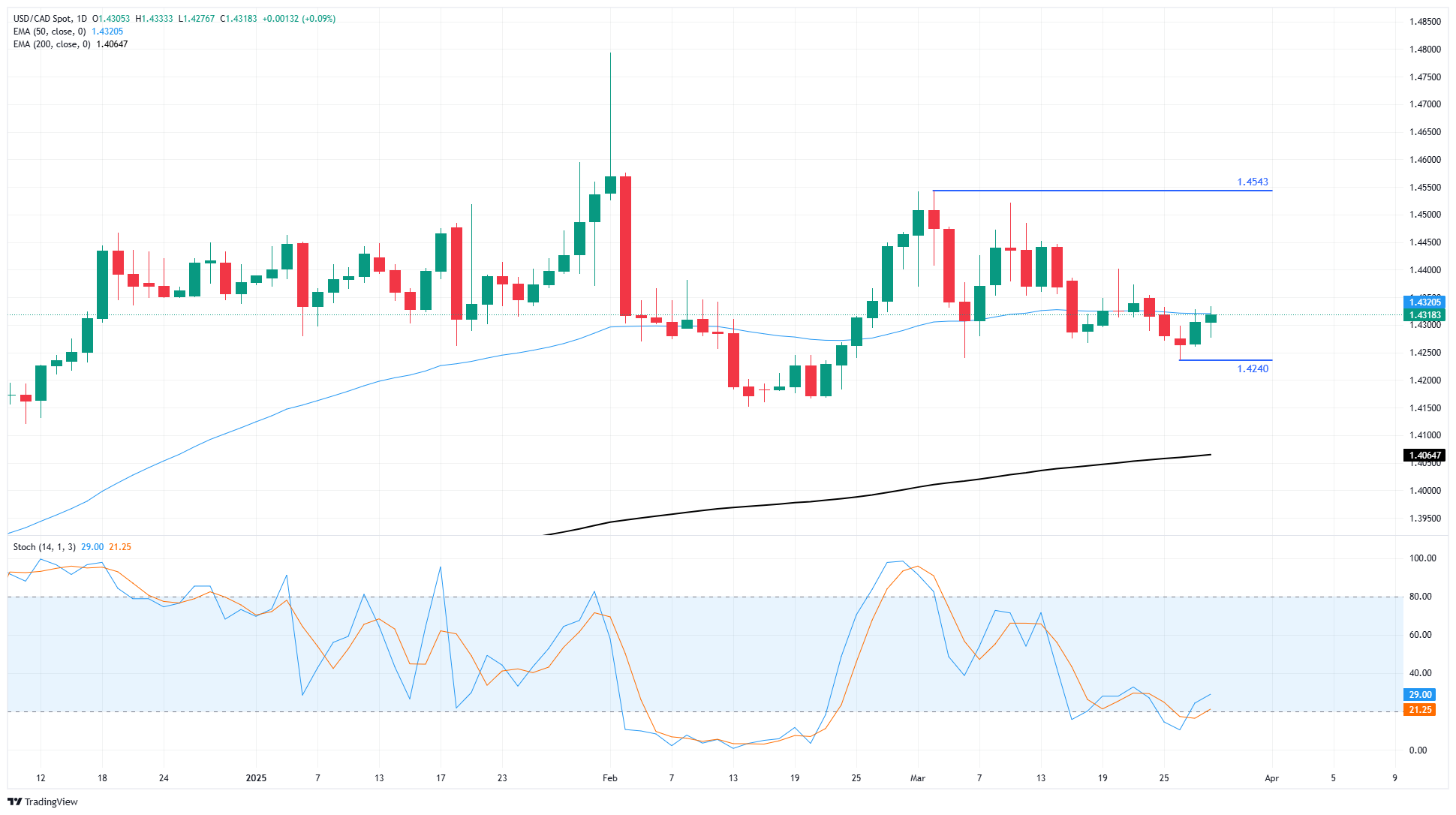Canadian Dollar roils as Trump reiterates tariff threats
- The Canadian Dollar whipsawed on Friday, moving in both directions before settling flat.
- The Trump administration remains committed to sweeping tariffs on Canadian goods.
- More tariff threats come on the heels of deteriorating US economic data.
The Canadian Dollar was dragged in both directions on Friday, rising and then falling as market flows clash with fresh threats of tariffs on Canada from US President Donald Trump. Market sentiment is evaporating as the Trump administration barrels toward its self-imposed deadline of April 2 for a wide package of ever-changing tariffs that still remain light on firm details.
Friday was heavy on the US side of the economic data docket, with core US Personal Consumption Expenditure (PCE) Price Index inflation rising in February, crippling rate cut hopes and also flashing warning signs that inflation may remain above targets for far longer than expected. US consumer sentiment measures also tumbled as consumer turn increasingly negative on the Trump administration’s handling of the economy in general, and more specifically international trade.
Daily digest market movers: Canadian Dollar whipsaws as tariff threats weigh on Loonie
- The Canadian Dollar rose early on Friday after the Greenback declined, before slumping back after President Trump reiterates his intent to go through with tariffs on Canada.
- US core PCE Price Index inflation ticked higher in February, climbing to 2.8% YoY.
- University of Michigan Consumer Sentiment Index fall to a two-year low at 57.0, and UoM Consumer 5-year Inflation Expectations also climbed again to 4.1%.
- Despite deteriorating consumer sentiment, and inflation figures already beginning to rise in anticipation of tariffs, President Trump took the time to insist that he will be going ahead with sweeping tariffs on Canada.
- Next week will be a slow burn as investors keep an eye on trade headlines in the runup to the Trump administration’s April 2 tariff deadline. US Nonfarm Payrolls (NFP) and Canadian labor figures are also due next Friday.
Canadian Dollar price forecast
The Canadian Dollar continues to grind through a rough consolidation phase that has stretched on for months. USD/CAD has returned to familiar technical levels just above 1.4300, with bids mired in the 50-day Exponential Moving Average (EMA) at 1.4320.
USD/CAD daily chart
Canadian Dollar FAQs
The key factors driving the Canadian Dollar (CAD) are the level of interest rates set by the Bank of Canada (BoC), the price of Oil, Canada’s largest export, the health of its economy, inflation and the Trade Balance, which is the difference between the value of Canada’s exports versus its imports. Other factors include market sentiment – whether investors are taking on more risky assets (risk-on) or seeking safe-havens (risk-off) – with risk-on being CAD-positive. As its largest trading partner, the health of the US economy is also a key factor influencing the Canadian Dollar.
The Bank of Canada (BoC) has a significant influence on the Canadian Dollar by setting the level of interest rates that banks can lend to one another. This influences the level of interest rates for everyone. The main goal of the BoC is to maintain inflation at 1-3% by adjusting interest rates up or down. Relatively higher interest rates tend to be positive for the CAD. The Bank of Canada can also use quantitative easing and tightening to influence credit conditions, with the former CAD-negative and the latter CAD-positive.
The price of Oil is a key factor impacting the value of the Canadian Dollar. Petroleum is Canada’s biggest export, so Oil price tends to have an immediate impact on the CAD value. Generally, if Oil price rises CAD also goes up, as aggregate demand for the currency increases. The opposite is the case if the price of Oil falls. Higher Oil prices also tend to result in a greater likelihood of a positive Trade Balance, which is also supportive of the CAD.
While inflation had always traditionally been thought of as a negative factor for a currency since it lowers the value of money, the opposite has actually been the case in modern times with the relaxation of cross-border capital controls. Higher inflation tends to lead central banks to put up interest rates which attracts more capital inflows from global investors seeking a lucrative place to keep their money. This increases demand for the local currency, which in Canada’s case is the Canadian Dollar.
Macroeconomic data releases gauge the health of the economy and can have an impact on the Canadian Dollar. Indicators such as GDP, Manufacturing and Services PMIs, employment, and consumer sentiment surveys can all influence the direction of the CAD. A strong economy is good for the Canadian Dollar. Not only does it attract more foreign investment but it may encourage the Bank of Canada to put up interest rates, leading to a stronger currency. If economic data is weak, however, the CAD is likely to fall.


